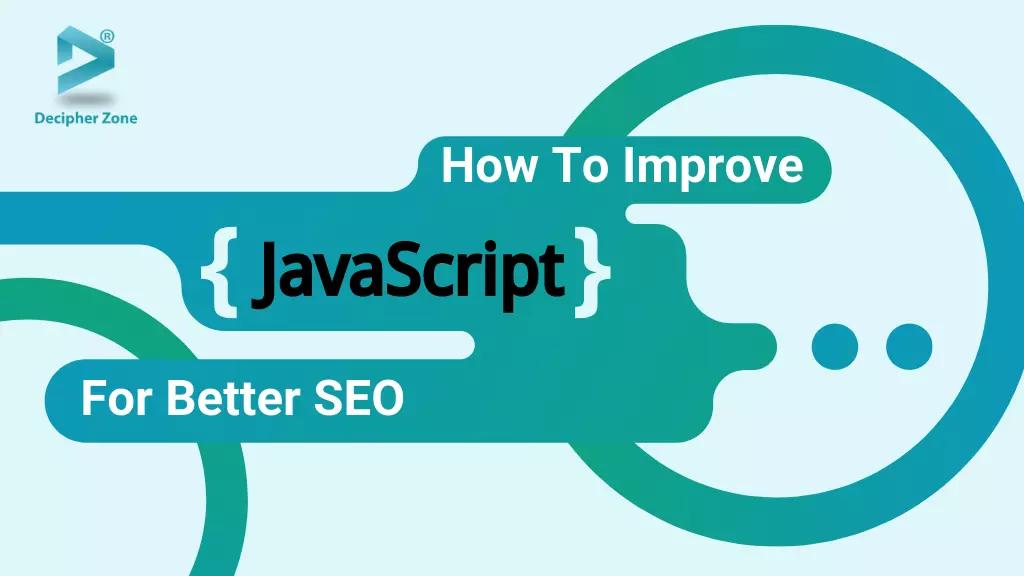“JavaScript and SEO? This doesn’t make any sense!”. Yeah, we know. It’s difficult to imagine what these two absolutely different niches have in common. A programming language has little to do with keywords, trusted backlinks and how they influence the Google rating of a website.
Well, we know there is a connection. JavaScript can make the optimization of your site much, much more difficult and poorly performing. Gladly, the best minds of both industries have come together to find causes and resolve this issue.
And now, we know what to do!
What is the SEO JavaScript Connection?
What is JavaScript SEO? It is a complex of actions one does to make a website that heavily relies on the programming language easy to index and rate for search engines.
The thing is, it’s very difficult for crawlers to identify the topic of the website and understand its contents if there’s a lot of scripts. This makes indexing more complex. Your pages have to go through a whole another rendering process, which may take a while.
Read: The Development Cost and Features of Cannabis Delivery App
Usually, there are only two stages:
-
The search engine sends the new URLs to the crawl queue;
-
The data goes further to the indexing phase.
But heavily ‘scripted’ pages go through additional rendering steps. So, if you don’t see the site in search engine results for a long time, the amount of code might be the culprit.
Imagine marketplaces with dozens of thousands of pages, and each one has to go through several steps before being indexed. This doesn’t sound like great website performance, right?
So, can such a situation be improved? Sure! How to do it? Read further and you’ll find out!
Top Practices for JavaScript SEO Improvement in 2021
Not using the language for website design and functionality isn’t the best way out. You can make every page more crawler-friendly by using the following techniques.
All the other stages of optimization such as effective SEO link building and regular analysis will go much smoother and show better results if the initial crawling of every page goes well.
Try to Avoid Page Rendering
Render blocking JavaScript and CSS slow down the speed of the pages of your website that is bad for search engine optimization. But before eliminating render-blocking scripts, identify the script that is causing problems. To do so, you can use PageSpeed Insights by Google and analyse your website. Make a list of scripts that are under Eliminate Render-Blocking JavaScript and CSS.
Read: Why User Experience Matters?
To reduce the render-blocking script:
-
Remove unnecessary comments and extra whitespaces in the source code
-
Concatenate JavaScript and CSS
-
Use asynchronous loading to defer JavaScript till everything on the page is ready.
All Essential Data Should Be in the First HTML Response for Crawling
The first response must include:
-
The title of the page;
-
Its metadata;
-
Other data is stored in the <head> section of the code.
In this way, you’re showing the Search Engine what your page is about instantly before the rendering process starts. This is in case you can’t avoid such a prolonged check before page indexing. Creating a great first impression is crucial, and you can do it by showing a kind of ‘resume’ during the first response to crawlers.
Read: UX Design Problem For Students And Enterprises
This approach will also help you after a website redesign. dunebook highlights this topic very well, covering the difficult topic of rating improvement after a ‘redecoration’.
Don’t Forget to Adjust Tabbed Pages
Make sure that the initial HTML response has all the tabbed content as well. On product pages, for instance, it’s usually hidden from the user’s eye until they open the tab. But the Search Engine should see it to understand what kind of page it views and why it’s worth a high ranking.
Remember to Assign a Separate URL to Every Page
If you want the search engine to index every page on the website, you should assign a unique URL to each of them. Otherwise, it will be even more difficult for crawlers to get familiar with your page and content.
Read: How to improve user experience for mobile and web applications?
It’s not recommended to use parts of the URL to access new pages of the site. It’s hard to understand what keywords you’re trying to rank for if there’s so much information on one link. Plus, many tags will be ignored, which means you’re losing opportunities to rank.
Don’t Forget to Include Navigation Data in the First HTML Response
Include all essential navigation data in the initial HTML response. We don’t just mean the basic navigation but the footer and sidebar as well. There are many additional links that will make the website ‘understood’ quicker and easier.
Use Pagination
It’s better to create several pages for proper navigation and better crawling. It’s easier for search engines to process several smaller pages than a large one. While long scrolling may be convenient for users, if the Search Engine doesn’t show it in results soon, you’ll have no users to impress.
Read: Top 5 User Experience Trends in Web Application Design
As you can see, everything in website creation is interlinked. It seems that JavaScript and SEO are so different, but they can be connected to make your pages oblivious to Google. But you also can make adjustments that will achieve two goals: a great user experience due to functionality and proper optimization and a high ranking in the search engine.
This is worth the work. So, analyze your website performance right now and hire specialists to fix any issues you have!

